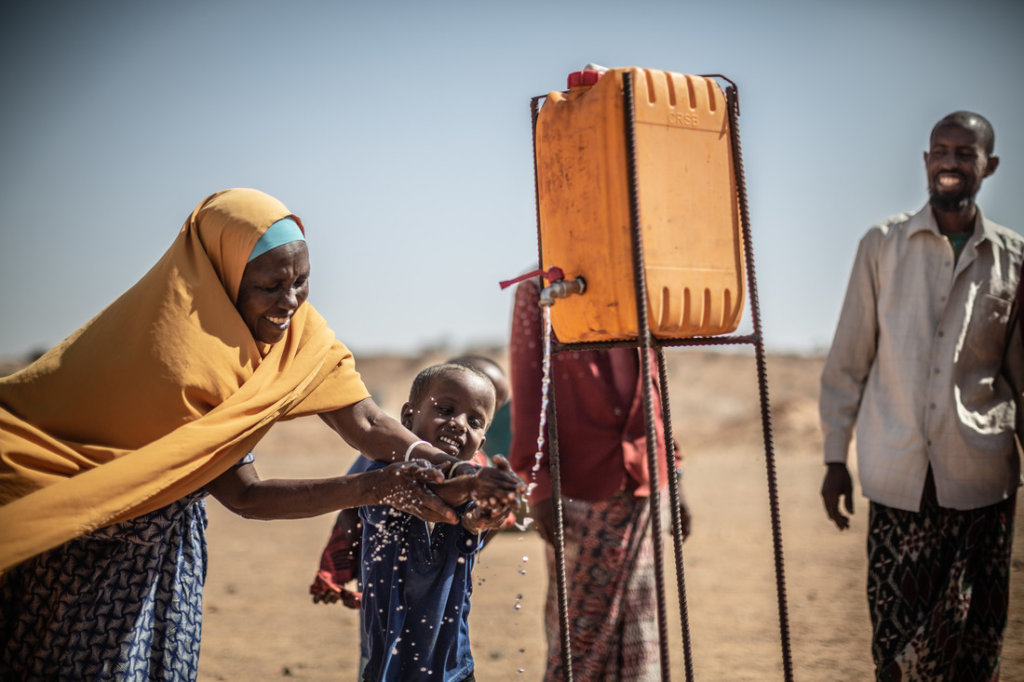By Oxfam GB | Project Lead
Context
In April alone, the number of people requiring humanitarian assistance jumped from 4.9 million to 5.4 million(10%increase, 500,000 people). During this period, people in IPC3&4, rose from 1.5 million to 2.2 million -700,000 shifting into IPC3&4 in a matter of weeks. People requiring assistance was down to 4.6 million in December 2018, meaning the 5.4 million today represents a 17.4% increase -800,000 people -in four months. Somalia’s population is estimated at 14-15 million, so 5.4 million people needing humanitarian assistance represents 35-40% of the entire population. The existing humanitarian response plan is circa 20-25% of GDP and remittances are estimated at 20-25% of GDP, meaning international support stands at about 40-50% of GDP -staggering really. Resources are extremely stretched and rapid, upscaled international support is critical. On connection to cyclones, FAO suggests they disrupted rain patterns in Somalia-Somaliland, exacerbating drought.
Humanitarian Key Messages
Somalia and Somaliland remainteetering on the edge of a humanitarian catastrophe.An estimated 4.9 million people are in need of humanitarian assistance and 2.6 million are internally displaced. Failed rains have heightened water and food scarcity, with the situation rapidly deteriorating in the first quarter of 2019, pushing hundreds of thousands more people into requiring humanitarian assistance.Continuing drought from 2016 means very limited recovery and resilience. Millions of livestock were wiped out by the drought beginning in 2016 that continues today, with many people losing all their livestock. This means that even with limited rain and pasture, mostpeople are unable to rebuild their livelihoods.
Humanitarian funding remains woefully inadequate. At the end of April 2019, Somalia’s Humanitarian Response Plan is only 19.4% funded, leaving an enormous funding shortfall of US$868.8 million.The lack of funding is increasing vulnerability through lack of food, water and other basics. Early and rapid response is critical to averting catastrophe. Signs are showing a rapidly deteriorating humanitarian situation.
Armed conflict and insecurity are exacerbating hardship. Many areas in South Central Somalia remain highly insecure, active conflict zones, where humanitarian access is severely restricted. All actors must guarantee humanitarian access in line with International Humanitarian Law, specifically Customary IHL55 stating that parties to conflict must allow and facilitate rapid and unimpeded passage of humanitarian relief for civilians in need.
Halimo's Story
“We lost all of our livestock due to the drought – goats, sheep, camels and donkeys. Some were for transport and others for income, such as milk and meat. It was a tragedy. The situation is now getting better with Oxfam’s support.
The host community was unhappy that we were registered for benefits. Some people were shouting at us. NGOs were concerned, so they didn’t come. It’s clan-based conflict. The tension is because people in the host community are unregistered for assistance. The tension can cause violence.
Previously, we took water from the borehole. It takes one hour to get there. The borehole water is very salty and not good quality. The Oxfam water (from trucking) is healthy and clean. It was very difficult collecting water before because of the two hour round trip. It was safe, but walking in the sun was very harsh.
Thank you for supporting those affected by drought in East Africa.
Project reports on GlobalGiving are posted directly to globalgiving.org by Project Leaders as they are completed, generally every 3-4 months. To protect the integrity of these documents, GlobalGiving does not alter them; therefore you may find some language or formatting issues.
If you donate to this project or have donated to this project, you can receive an email when this project posts a report. You can also subscribe for reports without donating.
Support this important cause by creating a personalized fundraising page.
Start a Fundraiser